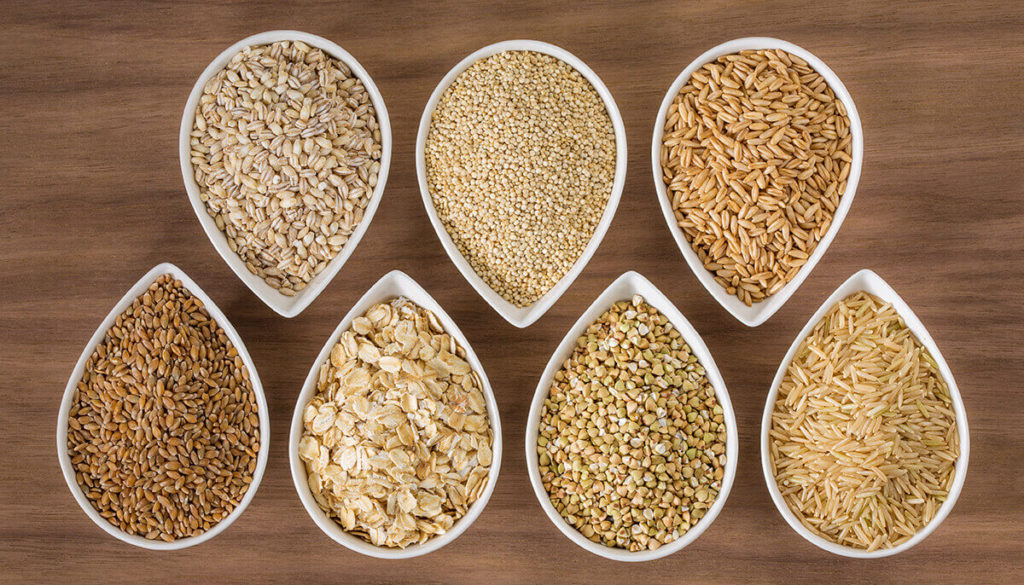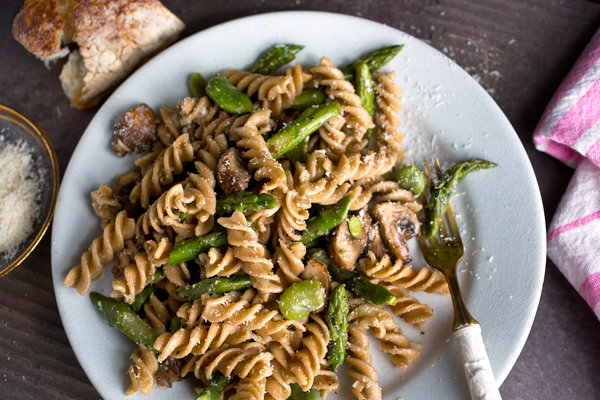The Goodness of Grains

What are Grains?
Did you know that between us Canadians and The United States we produce collectively the most gain in the world? Canada alone grew $5.4 billion worth of grain in 2019, thats a lot buns! When you think of Grains what comes to mind? The wheat fields of our prairies? Freshly baked bread? Bowl of maple oatmeal? Muffins? The list of foods produced from Grains is endless.
Here in Canada the grains take up the largest part of our food guide. They do for good reason, there are so many different types of grains. They include wheat, spelt, kamut, oats, corn, rye, rice, millet, triticale, barley just to name a few. Grains are actually seeds of specific grasses, there are three parts of the grain; the bran (outer layer), the germ (small core of the grain), and endosperm (the bulk of the grain). When you see “Whole Grain” it means that all three parts of the grain are included. This is what us healthy mindful eaters are looking for when we choose grains.
The Whole Grain is full of nutrients like vitamins and minerals. They including B-vitamins, vitamin E, Chromium, Iron, Copper, Zinc, Selenium, Magnesium and Potassium. They also are an a amazing source of Fibre and Phytochemical’s. Both of which have endless health benefits. They are constantly studied for their positive role in prevention of Heart Decease and certain Cancers.
When it comes to our Macronutrients (Carbohydrates, Proteins and Fats) whole grains contribute way more than just Carbohydrates. 10 – 15% of the calories in whole grains is provided from protein. A lot of grains do lack the important amino acid lysine. When combining these whole grains with other healthy foods you can meet all your amino acids requirement (Protein requirements). There is also Quinoa and Amaranth though not officially considered grains. They do have the amino acids to be considered a perfect protein. Whole grains are also low in fat (5 – 15% of calories). The fat they do contain is polyunsaturated and from the essential omega -6 family, this is a good thing!
Will Grains Affect My Health Goals?
Grains can have a bit of a bad reputation when it comes to weight loss. They are 70 – 85% carbohydrate and it is commonly thought of as being a bad, this is simply not true. Grains containing this much carbohydrates makes them the worlds most important energy source. And like I said before they are packed with endless nutrients and health benefits. The thing that is important to know about grains is which ones to choose and how much to have.
When choosing grains or foods that contain grains the most important thing to know is PICK WHOLE GRAINS! We all know white flour is bad fro you. Its bad because all of the important nutrients are stripped from the whole grain. The bran and germ are removed form the grain. These guys are the powerhouses that hold the important fibre (bran), protein, healthy fats, vitamins and minerals (germ). You are just consuming starch when eating foods with white flour. Not the good starches like those found in vegetables and cough* cough* whole grains.
Another common flour or ingredient we see often is Multi Grain. Multi Grain is a marketing trick that has fooled many of us. Multi grain means that different types of grains are mixed in. Very often these grains are also missing their bran and germ. Millions of dollars are spent annually on marketing to make it sound like Multi grains foods are healthy for you. When in reality they are just slightly better than white flour.

So How Do I Pick My Grains?
So how do we choose these whole grains foods at the grocery store? Look at the ingredient list of the grain product. If the first ingredient on the list does not say WHOLE GRAIN its not what your looking for. On ingredient lists the first one that is listed is always the one that is present in the largest amount. So we want ones with the bulk ingredient being whole grain.
So then how much should we have? I have a rule for myself that helps me enjoy whole grain foods. If it is a one ingredient whole grain like rice or oats. I visualize one of my hands as a scoop. If I was to fill that scoop with the whole grain that would be my serving. When it come to processed whole grain product, like bread or pasta. I make sure it is no more than 1/4 or less of my meal if possible. Now everyone is different in their energy needs. What works for me may not work for you. But as long as we are choosing the whole grain foods its more than half the battle. You can then fill these meals up with fruits or vegetables. A bit of lean protein and you have the perfect meal.
I hope this was helpful in giving you all a little more information about grains. The most abundant food source on our planet. If you have any questions or want to sit down and chat about nutrition please send me an email [email protected] or click the link below.
As Always healthy regards,
Kj


